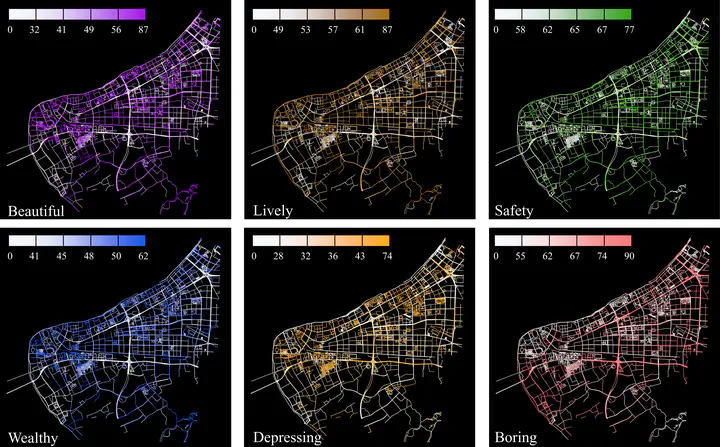Measuring residents’ perceptions of city streets to inform better street planning through deep learning and space syntax

Abstract
The quality of street space plays an important role in promoting urban development. Street space refers to public spaces consisting of street elements such as plant, roads and buildings. Humans are the main users of street space. How to quantify the human perception of the quality of street space and how to explore the connection between the quality of street space and street composition elements have been major topics of research in various fields. The development of big data and computing has offered new technical tools for the quantitative assessment of street perception, while space syntax can provide a theoretical complement to fine-grained spatial perception studies for streets. Our research introduces a new method to evaluate the quality of street space on a large scale based on street space perceptions. The Binjiang district of Hangzhou city of Zhejiang Province of China was used as the study area to validate our method. A deep learning scoring model was constructed using street images of the area. The perception of the street scenes was scored on six dimensions: beautiful, wealthy, safety, lively, depressing, and boring. The six perceptual dimensions were further divided into positive and negative percep tions. The top 20% of street views with the highest positive perception scores were considered high-quality street spaces, and the top 20% of street views with the most negative perception scores were considered low-quality street spaces. Finally, an overlay of those streets with the highest accessibility identified street spaces with the highest probability of travel and the highest or lowest quality for residents. These streets are of high priority in the subsequent urban plan. We used multiple linear regression to explain the association between the spatial quality of the streets and their constituent elements. The results showed that positive perceptions were positively correlated with the presence of plants and roads and negatively correlated with walls, the ground, water, and fences. Negative perceptions were positively correlated with walls and buildings. The present study provides fundamental information on the patterns of urban spatial perception. The use of space syntax in deep learning can provide methodological support for more refined urban planning research and provide a reference for future urban planning that embraces a human perspective.